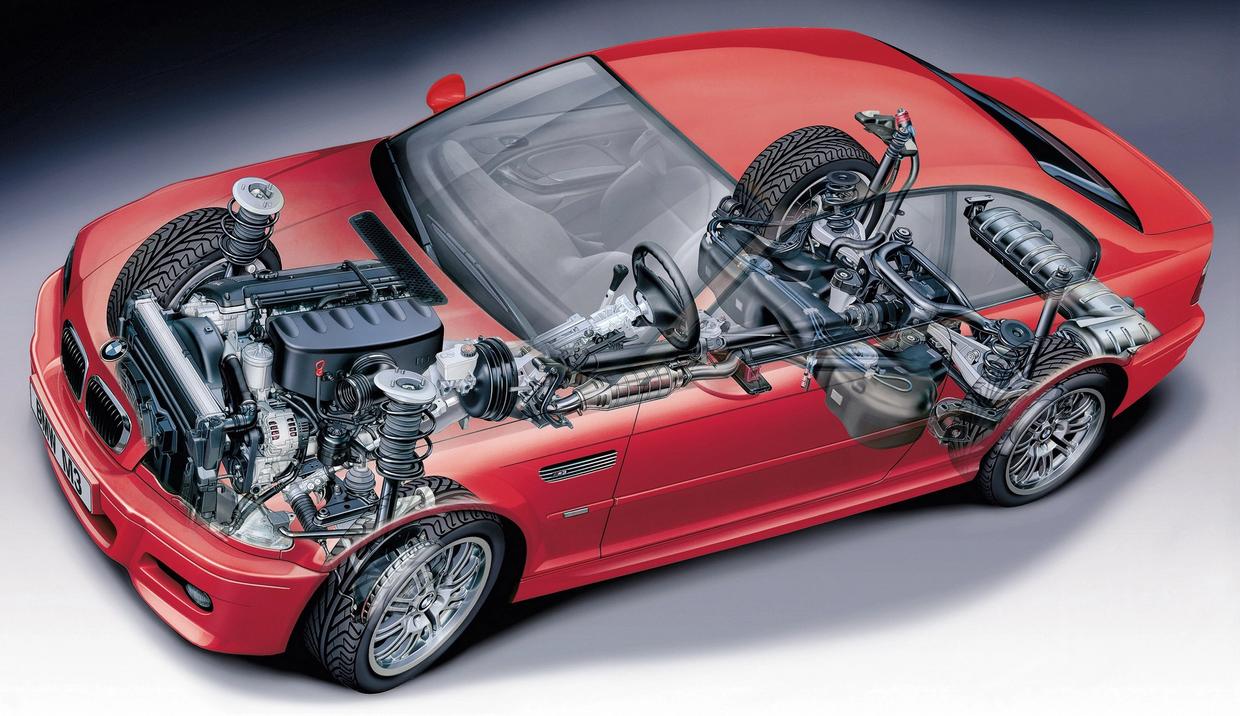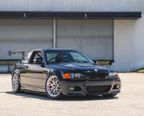Tech Article: How BMW Suspension Upgrades Effect Wheel Fitment

Each BMW chassis rolls off the assembly line with a different amount of available real estate under the fender arches, meaning some vehicles will have more limitations than others. Typically, the fenders on a non-M 3-Series chassis start out with dramatically less space in comparison to the M3 with factory flared fenders. As a result, it is increasingly more difficult for non-M cars to accommodate a set of wide wheels and race rubber.
Aside from how an auto manufacturer designs the body work of a given vehicle, one of the most important contributing factors in determining how much space you have to work with is the genetic makeup of your OEM or aftermarket suspension configuration. Just as the performance capabilities drastically vary from one suspension to another, each impedes wheel and tire clearance differently due to a variance in spring shape (conical vs linear), spring length, strut body diameter, whether or not helper/tender springs are present, and ultimately the overall stack height.
If maximizing wheel and tire width is important to you, it is imperative to consider the physical size of your current suspension setup prior to purchasing a new set of wheels and tires. This is also an important factor to consider upon upgrading your suspension. While you may not have immediate plans to push the limits of wheel and tire width, we encourage you to plan for the future.

The E46 M3 photo above depicts the front and rear suspension configuration used on the following models: E30, E36 & Z3, E46, E8x 1-Series & Z4, E9x, F3x, & F8x.
Taking a closer look at the photo above, we can clearly see how the overall suspension layout varies between the front and rear of the car. When comparing the differences in these two suspension configurations, it becomes clear as to why so much more emphasis is placed on front clearance as opposed to the rear. The factory BMW suspension consists of a coilover (coil spring over shock) design in the front, and a “divorced” spring and shock configuration in the rear. This “divorced” configuration places the springs inboard on the rear control arms, leaving ample clearance for a wider rear wheel and tire setup. A vast majority of enthusiasts choose to keep a divorced rear suspension configuration, even in cases where the car is being heavily modified for track work.
- Bolt pattern: 5x120mm
- BMW

Geirsen Kalhagen
Geirsen K.
Geirsen (pronounced “gear-sen”) has been a Product Expert at APEX Wheels for more than four years, specializing in VW/Audi and BMW wheel fitments. Prior to joining APEX, he worked for five years in various roles at a BMW dealership, including detailing, service, and BMW Genius. During this time he participated in multiple, corporate training classes in the technical and motorsport aspects of new BMW models. The first car he ever purchased, at the ripe old age of 17, was an E46 325i sedan. That car introduced him to the automotive enthusiast world and instilled a passion for driving that has continued to grow ever since. More recent rides include a Z4M coupe and a 2011 335i, both of which allowed him to further expand his driving skills at HPDEs. Fun Fact: After picking up a Tacoma in his home state of Washington, Geirsen now tows his boat to the river more often than he tows a car to the track.
Have questions about wheels for your VW/Audi, or BMW? Use our contact form and ask for Geirsen.

